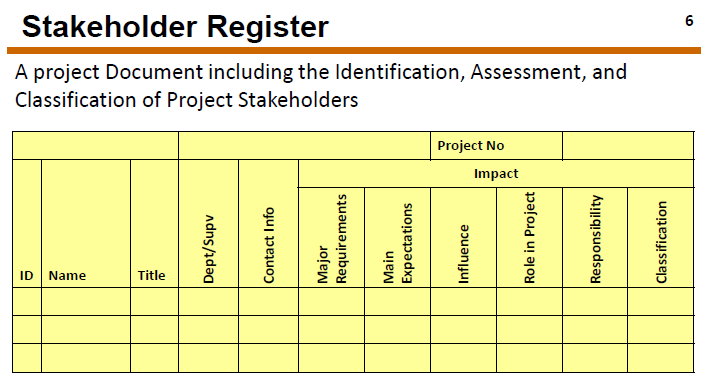What is a Stakeholder?
Anyone who affects or get affected in any way by an organization like organizational decisions, its products/services or its deliverables is considered as a stakeholder. It can be an internal stakeholder or outside the organization.
Internal vs External Stakeholders
- Sponsor (External/Internal)
- Project Team (Internal)
- Customers and Users (External/Internal)
- Sellers (External)
- Business Partners (External)
- Organizational Groups (Internal)
- Functional Managers (Internal)
- Others, e.g.:
- Procurement entities (External)
- Financial Institutions (External)
- Government Regulators (External)
- Subject Matter Experts (External/Internal)
- Consultants (External)
A Typical Stakeholder Classification Method
- Many Classification Models in use; Power-Interest (or Authority-Interest) Grid is one of them
Engagement Strategy for a Stakeholder dependent on his Classification.
Stakeholder Assessment
An Assessment Matrix is used to assess the Current (C) and Desired (D) level of Assessment. For effective management, any Gap between C & D should be removed by reviewing Engagement Strategy
Some Stakeholder Engagement Strategies
Depending on the nature/status of the Stakeholders, and the given situation, one of more of the following strategies could be considered:
- Good communication with the Stakeholders
- Sharing Project Information or Status Reports with them
- Taking them on Project Visits
- Meetings with them
- Inviting them to Milestone Parties
- Giving importance to their Advice
- Responding to their Queries, promptly & correctly
- Addressing their Concerns
- Inviting them to Review Meetings
- Presenting Project Accounts
- Resolving Conflicts
- Reviewing Engagement Strategy with time and changed situation
- Staying Engaged; never burning bridges; remaining mentally ready to face negative comments or difficult situations; and devising suitable response


